top of page

PORTUGAL
Portugal sits on the edge of Europe in relative obscurity, especially when compared to neighboring Spain and France. Most people have not only heard of Spain and France but could easily list a few facts about each country and its culture.
Although most people don’t know a lot about Portugal, there are a few things that almost everybody thinks of when they think about it.
Port Wine
Portugal is famous for the production of Port Wine, which is produced in the Douro Valley in Northern Portugal. Although some other countries produce a port-style wine - South Africa, for instance - only port wine produced in Porto can be called Port.
You've probably tried Port before, and most likely that was around Christmas time. In Portugal, Port is consumed throughout the year. It's a popular dessert wine, and is often ordered at the end of a meal in Portuguese restaurants, or as part of a cocktail like Port and Tonic.
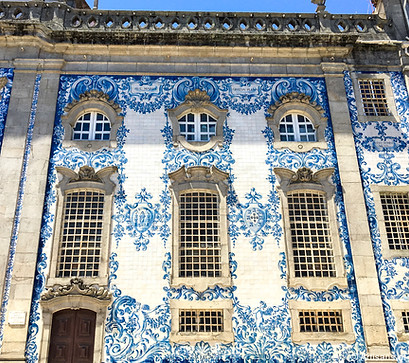
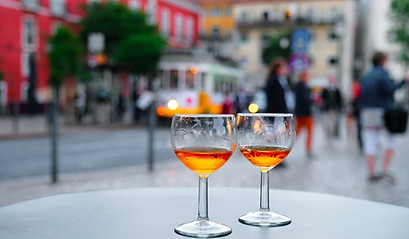
Azulejos (Tiles)
Portuguese buildings, particularly those in Lisbon, are incredibly photogenic thanks to the beautiful tiles that line the outside of the buildings. Tiles are used to regulate heat in the buildings, and the concept was introduced into Portugal when Portugal was under Moorish rule. When Portugal regained control, it kept the tiles but with one slight change. Painting people is prohibited under Islam, and the early Moorish azulejos used geometric shapes as their designs. This rule doesn’t exist in Catholicism, and so tile makers began painting elaborate scenes often of the Portuguese explorers going around the world, daily life in Portugal, religious scenes, and pictures of royalty and rulers.
Note: Tile theft is a big problem in Lisbon with people removing tiles from the outsides of buildings in order to sell them illegally. Be very wary of buying antique tiles, particularly at flea markets like Feira da Ladra.
Cork & Cork-Based Products
Portugal is the world’s top cork producer and is home to the largest cork forest in the world. Cork and cork-based products make up roughly 2.3% of Portugal’s exports.
Demand for cork, particularly within the wine industry, is declining rapidly as more and more wine producers switch to alternatives. This isn’t so much the case within Portugal. Go to a Portuguese supermarket, and you’ll see that almost all of the wine has a cork stopper. Internationally, however, more and more wine producers are switching to the screw cap and other alternatives.
In response, Portugal has gotten very creative and tried to come up with new and creative ways to use cork. You can now buy handbags, purses, wallets, shoes, mousepads, ipad covers – you name it, all made from cork.
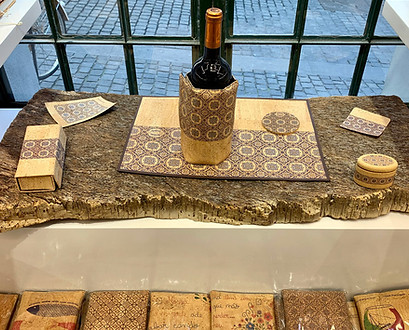
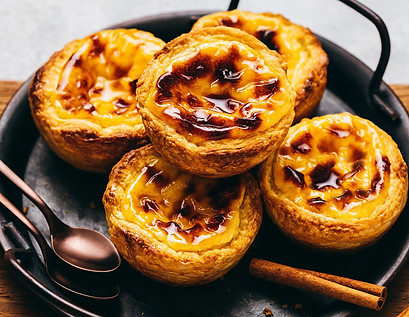
PASTÉIS De NATA
Pastéis de nata, or Portuguese custard tarts as many people like to call them, is Portugal’s biggest gift to the culinary world. Crunchy, soft, and gooey – they’re the perfect compliment to a cup of black coffee.
But as great as pastéis de nata are, they’re not the only cake Portugal makes. Portugal makes tens and possibly hundreds of different cakes, but unfortunately most aren’t easily available outside of Portugal. You’ll just have to come here to try them.
Aside from the pastéis de nata, other Portuguese foods that you should look out for include cakes bolos de arroz, queijadas de Évora, and guardanapos, as well as main dishes like bacalhau, frango piri-piri, and leitão.
Golf Courses
Portugal is one of Europe’s most popular golfing destinations, and the Algarve in particular is home to some of the most popular golf courses in the country. Portugal’s golf courses have been recognized by several golfing organizations and publications. In 2014, Portugal won awards for being both the ‘best golf destination in Europe’ and the ‘best golf destination in the world’ at the World Golf Awards. In the same year, six Algarve golf courses were listed in the publication Golf World’s Top 100 Courses in Continental Europe 2014.
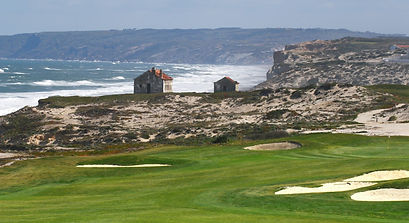.jpeg)
LISBON
Lisbon is the stunning capital city of Portugal and is one of the most charismatic and vibrant cities of Europe. It is a city that effortlessly blends traditional heritage, with striking modernism and progressive thinking. The Portuguese capital is constantly recognized as one of the greatest cities in the world, a claim confirmed by the “Lonely Planet Guides", who named Lisbon one of the world’s top 10 cities. Surprisingly, Lisbon is still one of Europe’s least visited capitals, but this is rapidly changing as new visitors discover the allure of Portugal.
Lisbon is divided into several clearly distinguishable neighborhoods with the most traditional ones being the districts of Baixa, Chiado, Bairro Alto, Alfama, Belém and the Avenida da Liberdade. These areas are popular with tourists and are within walking distance of the main sights and attractions.

bottom of page
